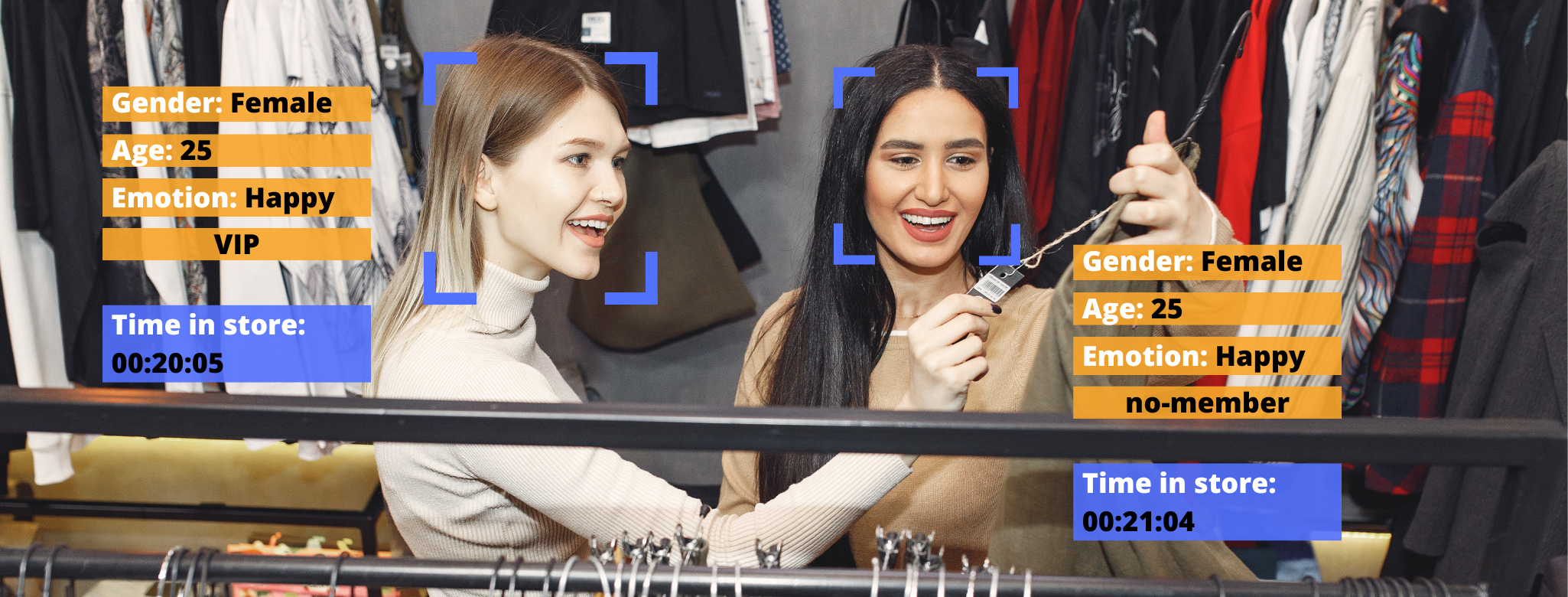When we browse the Internet, visit websites or shop online, we generate information about our interactions on the network that online retailers take advantage of in order to: personalize content, discover new requirements, find out which content/products work best and which should be promoted. There are so many possibilities that digital marketing offers to boost customer engagement. But what would happen if these possibilities could be extrapolated to the offline world?
This is what new retail technology in physical stores is proposing. Thanks to facial recognition, it is possible to generate demographic and behavioral information about the client in physical spaces and in real time. This translates into cost savings and competitive advances because it gives the customer a more customized treatment focused on their needs.

In this blog we will detail which are the 6 most important and outstanding functions:
- Information for customer targeting. The software is able to collect information about: age and gender, mood, number of visits made, store tour. On one hand, this analysis can help to make adjustments in areas where price, advertisements or customer service are not the right ones. As well as, hunting trends (where consumers buy more impulsively or where large groups buy small products as gifts). On the other hand, this data will allow the creation of targets and the generation of personalized offers. For example, different ads can be made to rotate depending on the customer in front of them, as well as, it can be used in digital kiosks to provide consumers with personalized offers.
- Recognition of customers as soon as they enter the store. This feature has two important benefits. First, the software stores the number of visits, sales and preferences of the customers, which can be useful to perceive which products they have seen but not purchased. Secondly, it allows the best service to VIP customers. For example, by creating alerts for employees in which they are provided with the customer’s name and preferences in order to make recommendations more in line with their own tastes.
- Occupancy control and people counting. It is possible to control the occupancy in real time and its duration of permanence. This can help in terms of security and service, as it will be possible to know which are the peaks with greater affluence and therefore, generate an appropriate coverage of employees and product placement.
- Identification of criminals. The facial recognition system could be used to establish a database of criminals, detecting and alerting them as soon as they enter the store. In addition, it could provide security agents their identity and location in real time.
- Identification of employees. Using facial recognition, it would be possible to know precisely when the employee arrives at the store, when he/she is on a break, at what time he/she leaves work… Being a much more accurate way and with less administrative volume than conventional means. Also contributing to increased employee productivity.
- Point-of-sale verification. Using facial recognition, identities can be verified quickly and payments can be authorized. It would not even require the use of credit cards or smartphones. Therefore, we will ensure that no fraudulent transactions can take place, as this technology ensures that the recognised face is a live face, i.e. it is not a video or a photograph in front of the camera.

On the other hand, there are some important points to bear in mind when using this technology. Firstly, if you want to use it in Europe, you have to comply with the European data protection law. In the following link you will find a blog dedicated to this point. Secondly, in case of the need to identify shoplifters, the use of facial recognition technology must be announced before customers enter the shop so that they give their approval for its use. And finally, it is very important that the company in charge of the software be responsible for regularly deleting the data if it is no longer needed.
As we have seen, the benefits of facial recognition in retail are huge, both for retailers and visitors. As a multi-purpose tool, we can increase the security of an establishment while collecting the data needed to increase customer satisfaction. Definitely the technology of the future in retail.
If you want to know how it is used in reality, we offer you with 5 current use cases in this link.


